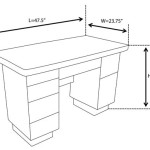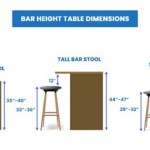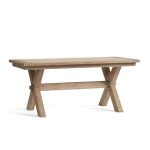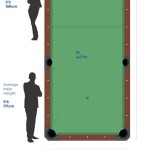48 Inch Square Table Seats How Many Chairs?
Determining the appropriate number of chairs to seat around a 48-inch square table is a common consideration for homeowners, restaurant owners, and event planners alike. The answer isn't always straightforward and depends on several factors, including the table's design, the chair dimensions, and the desired level of comfort for the individuals seated. A 48-inch square table provides a defined surface area suitable for dining, games, or meetings, but maximizing its utility requires careful planning of the seating arrangement.
The primary concern revolves around ensuring adequate personal space and elbow room for each person at the table. Overcrowding can lead to an uncomfortable and unenjoyable experience, while too few chairs can leave the table feeling sparse and underutilized. Therefore, understanding the principles of space planning and considering the specific characteristics of the seating options are crucial to achieving an optimal seating arrangement.
The following discussion will delve into the key elements to consider when establishing the seating capacity of a 48-inch square table, providing practical guidance for creating a functional and comfortable setting.
Considering the Table's Base and Leg Design
The configuration of the table's base and legs plays a significant role in determining how many chairs can be comfortably accommodated. A pedestal base, for instance, typically allows for more legroom and flexibility in chair placement compared to a table with four legs positioned at the corners. With corner legs, chairs are restricted by the leg placement, which can limit the number of chairs that can fit comfortably without bumping into the table legs.
Tables with apron skirts, which are decorative panels that run along the underside of the tabletop, can also impact legroom. Low-hanging aprons can prevent chairs with higher armrests from being pushed fully under the table, effectively reducing the usable space around the table's perimeter. Therefore, it's essential to carefully assess the table's structural design to anticipate any potential limitations regarding chair placement.
Measuring the distance between the legs of a four-legged table is crucial. This measurement will determine the maximum width of the chair that can be placed between the legs without obstruction. If the distance is significantly less than the width of the chair, it will limit the seating capacity, potentially requiring smaller chairs or reducing the overall comfort level.
Pedestal tables, conversely, offer greater freedom in chair placement because they lack corner legs. This can permit more flexible seating arrangements, and the ability to squeeze in an extra chair if needed. However, a pedestal base might intrude on legroom if it is particularly wide or bulky. The trade-off between flexibility and legroom should be considered based on the specific design of the pedestal.
Chair Size and Style: Maximizing Seating Comfort
The dimensions of the chairs are a critical factor when determining the number of chairs that can comfortably fit around a table. Chairs come in various sizes and styles, ranging from compact side chairs without arms to larger, more substantial armchairs. The width and depth of the chair, as well as the height of the armrests, all contribute to its overall footprint and impact the available space around the table.
It's generally recommended to allocate at least 24 inches of width per person at the table to provide sufficient elbow room. This means that each chair should ideally be no wider than 24 inches to ensure a comfortable dining or working experience. However, for individuals who prefer more personal space, or for situations involving formal dining, allocating up to 30 inches per person may be more appropriate.
Chairs with armrests require additional consideration. Armrests can provide added comfort and support, but they also increase the overall width of the chair and can restrict how closely chairs can be positioned next to each other. Furthermore, the height of the armrests should be carefully considered in relation to the table's apron or underside. If the armrests are too high, they may prevent the chair from being pushed fully under the table, reducing the available space and potentially creating an awkward seating arrangement.
Backless stools and benches can be alternative seating options, particularly in more casual settings. These options often require less space per person, but they also provide less support and may not be suitable for extended periods of sitting. The choice of seating style should be carefully considered based on the intended use of the table and the desired level of comfort for the individuals seated.
Stackable chairs, when not in use, can be stored neatly away, freeing up space. This is particularly useful in smaller dining areas or when the table is used for multiple purposes. Consider the stacking height and storage space required when choosing stackable chairs.
Optimal Spacing and Ergonomics
Beyond the chair and table dimensions, the principles of ergonomics and optimal spacing must be applied to achieve a comfortable and functional seating arrangement. Ergonomics focuses on designing and arranging workspaces (in this case, a dining or meeting space) to fit the people using them, promoting comfort, and preventing injuries. Proper spacing ensures individuals have enough room to move comfortably and engage in activities at the table without feeling cramped or restricted.
A minimum of 36 inches of clearance between the edge of the table and any surrounding walls or furniture is generally recommended. This allows individuals to easily pull out their chairs and move around the table without obstruction. In tighter spaces, reducing the clearance to 30 inches may be necessary, but this can make movement more challenging and potentially create a feeling of confinement.
The height of the chair seat relative to the table surface is also a crucial ergonomic consideration. Ideally, there should be approximately 10 to 12 inches of space between the top of the chair seat and the underside of the table. This allows for comfortable legroom and prevents individuals from feeling cramped or strained while sitting at the table. If the chair seat is too low, it can lead to poor posture and discomfort. If the chair seat is too high, it can make it difficult to reach the table comfortably.
Adequate knee clearance is another essential element. Ensure that there is sufficient space below the table's edge for individuals to comfortably position their knees. Tables with bulky aprons or supports may restrict knee clearance, which can lead to discomfort and poor posture. Consider the table's construction and design when assessing knee clearance requirements.
Taking these ergonomic considerations into account will help create a seating arrangement that is not only functional but also promotes comfort and well-being for the individuals using the table. A well-designed space ensures that people can focus on their tasks or enjoy their meals without being distracted by discomfort or spatial constraints.
In summary, a 48-inch square table can typically accommodate four chairs comfortably, provided the chair dimensions are within reasonable limits and the table's base design allows for adequate legroom. However, by carefully considering the table's construction, chair size, and ergonomic principles, it may be possible to seat more people, or optimize the seating arrangement for enhanced comfort and functionality. Trial and error with specific chairs and table in the intended space is the most reliable method for determining the ideal seating capacity.

The Right Number Of Chairs For Any Table Canadel S Blog

Amish Table Size Guide What Dining Do You Need

Table Size Seating Capacity Round Rectangular More

Amish Table Size Guide What Dining Do You Need

Pyramid 48 In Square Teak Outdoor Dining Table Westminster

Restaurant Seating Capacity Guide Tips And Guides

Table Seating Capacity Contemporary Craftsman Furniture

Best Master Furniture Harrison 48 In Antique Grey Wood Counter Height Square Dining Table H800ctch

The Right Number Of Chairs For Any Table Canadel S Blog

Standard Chair Heights And Dining Table Size Guide
Related Posts








